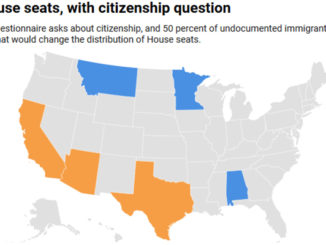
By Gary Becker
The Senate immigration bill before the House of Representatives is the most thorough overhaul of the approach to illegal immigrants in a long time. That is a major step mainly in the right direction. The bill also expands the number of skilled immigrants who can enter if they have enough “points” in a new merit-based system for admitting 250,000 immigrants annually. Although the bill on the whole should be applauded, it misses the opportunity to truly ease the entry of legal immigrants.
The number admitted as temporary skilled immigrants under the H-1B programs would be modestly increased from 65,000 a year to 115,000 per year, and eventually up to a possible 180,000 per year. This program allows companies to apply for particular skilled workers who can stay for three years, with the possibility of renewing for another 3 years. The new upper limit is still considerably less than the number of skilled employees that companies want to have, and it is even less than the numbers admitted during the boom years that preceded the recession.
In addition to relaxing the H-1B quota, the Senate bill introduces a new special quota that allows 25, 000 engineering and other scientific graduates with advanced degrees from American universities to gain admission annually. This is welcome, but it is a small number compared to the annual number of foreign graduates in these fields, or to the ability of the American economy to productively employ these graduates.
Skilled immigrants add a lot to the American economy not only in high tech fields, but also in sectors throughout the economy. They become entrepreneurs who employ other workers, they make scientific and other discoveries, and they provide many other valuable skills wanted by companies. The bill allows for the easy entry of entrepreneurs who want to start businesses in the United States. That is only of modest value since while immigrants are more likely to start businesses than the native born population, they usually do this only after being here for a number of years.
The expansion in the number of skilled immigrants who can enter under the point system and other provisions of the bill is definitely welcome, but it still does not do justice to the large value added to the American economy by skilled immigrants. The new quotas reflect not the demand for skilled workers by the American economy, but the opposition of professional associations of American skilled workers that want to limit the competition from immigrants.
I have argued in previous blog posts (see, e.g., my discussion on 11/14/2012) that the American economy can usefully employ many more skilled workers than are allowed to enter under current law (or under the Senate’s changes in the law). This is why I have proposed a very different approach to legal immigration that sells the right to immigrate to anyone (aside from terrorists, etc.) who wants to immigrate (see my “The Challenge of Immigration: A Radical Solution”, 2011). I show that skilled, young, and ambitious workers would be the ones who most want to come when immigrants must buy entry.
Most of the media discussion of the Senate bill revolves around its treatment of illegal (i.e. undocumented) immigrants since these are the most controversial provisions. The bill proposes a long overdue pathway to citizenship for many of the estimated 11 million or so illegal immigrants living in the United States. It requires them to have provisional status for at least 13 years before they can apply for citizenship. One may not be happy about giving favorable treatment to immigrants who came here illegally compared to individuals who are waiting their turn to be admitted legally, but no one can reasonably propose to send millions of illegal immigrants back to Mexico or other countries.
To satisfy some of the Senate opposition to allowing illegal residents to gain citizenship, the bill also proposes to make it much difficult to gain access to this country from Mexico by crossing the border illegally. It doubles the number of Border Patrol agents, and doubles the length of the pedestrian fence along the border.
These steps to police further the borders with Mexico may be politically necessary, but they are likely to be largely redundant because of two major changes in Mexico that are reducing the supply of would-be immigrants to the United States. One is the good economic performance of the Mexican economy in recent years that increased the number of decent jobs there. The second is the rapid decline in Mexican birth rates that is greatly reducing the number of young Mexicans, the group most likely to try to cross the border illegally.
If the Mexican economy continues to grow at a good clip, which is likely for the foreseeable future, the number of immigrants that want to come here illegally will be much lower than in the past. Although the recession in the US is the major reason why illegal immigration has dried up during the past 4 years, a contributing factor has been the decrease in the desire of many Mexicans to come to this country illegally. That decreased desire should continue, and even grow, during the next few years as the number of young Mexicans continues to decline.
The Senate immigration bill is a major overhaul of America’s policy toward illegal and immigrants. It also encourages legal immigration of skilled workers, although it does not go far enough. And it is ironical that the bill includes tough measures on border fences and border enforcement just when the desire of Mexicans to immigrate is declining rapidly.
Senior Fellow Hoover Institution Stanford University. University Professor
Department of Economics and Sociology Professor Graduate School of Business
The University of Chicago



